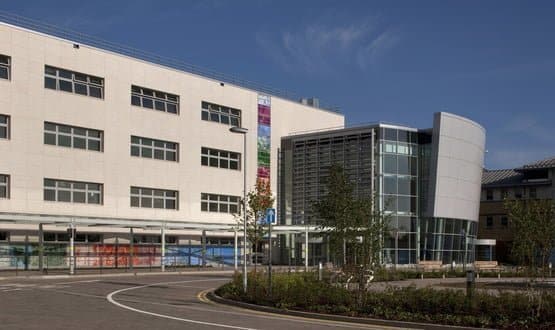Digital Health interview: Philippe Houssiau

Philippe Houssiau says CSC has successfully made the transition to the post-NPfIT world, and after “taking the bullet” has a world-beater in the Lorenzo electronic patient record.
The company’s vice president and general manager for healthcare in the UK and the Netherlands says it is now uniquely placed to enable NHS trusts transition to digital healthcare, based on new service models.
In an exclusive interview with Digital Health News, he adds that recent Lorenzo wins at Royal Brompton and Harefield NHS Foundation Trust and Sheffield Teaching Hospitals NHS Foundation Trust show the software is proven and competitive.
Perhaps more importantly for the future, the company is also being re-positioned as a healthcare services delivery firm, targeting the emerging coordinated care and population health management.
The recent contract win at Trafford, where the company will support a patient care co-ordination centre being set up by NHS Trafford Clinical Commissioning Group, is a first of type for the company.
Turn-around background
CSC was set to be one of the biggest software providers to the NHS during the National Programme for IT era. After Accenture pulled out in 2006, it was contracted to deliver the Lorenzo EPR, developed by iSoft, which it subsequently bought, to the entire North, Midlands and East.
However, there were repeated development and deployment delays. In 2012, the company wrote off the £1 billion that it had spent on the programme and negotiated a deal with the Department of Health to make the software available to trusts that still wanted it.
Belgian high-flyer Houssiau was brought in as a turn-around man to turn in 2013. A former president of Agfa Healthcare, he’d led Agfa’s transition from the analogue world to digital and hardware and services.
“At Agfa, I successfully built up imaging IT, offset decline in medical film with health IT,” he says. This included the $1 billion acquisition of GWI, the then-market leading EPR supplier in Germany and France in 2005.
After leaving Agfa in 2007, Houssiau worked as a troubleshooter for a number of healthcare firms, including a 3D prototyping firm, and led a $700m restructuring of Alliance Medical.
He also jointly founded a pharmaceutical generics manufacturer, now about to open its third plant. He says he remains involved, but leaves running the business to his partners.
“I’d built a reputation as a constructive turn-around guy and that’s what I was brought in to do with CSC Health,” says Houssiau. “All elements of building a great business were already there.”
The intent was to turn around the business as a component of CSC. “At CSC I was given a very clear mandate on running the downside, including writing off $1.5billion, and then restaging the business for growth.”
Rebuilding Lorenzo’s reputation
Houssiau says the first step was to restore confidence in the company, its numbers and products. “First you do the essentials – you have to be fully transparent on numbers. So we introduced a much higher degree of rigour on our numbers and how they were reported.
“We also brought in a new leadership team.” Only a handful of the former CSC team remain from the NPfIT-era.
However, Houssiau says that no matter how tough the going got, CSC stayed the course when it came to the NHS. “CSC did the right thing,” he insists. “It was the only incumbent to stay the course with the [NPfIT] programme.”
He stresses that Lorenzo is now a fully-fledged proven patient administration system, with 20 million lines of code. “We are now positioning it as the most robust PAS in the market, with very strong, highly mobile EPR applications.”
Those applications include e-prescribing, medicines management, theatres and maternity – all within an interoperability framework that pulls in breadth and depth of CSC as systems integrator.
“It’s very open ended and HL7 driven,” Houssiau says. “Lorenzo is no longer a one size fits all product from a US corporation. It’s a product developed for the UK that enables interoperability within acute settings and way beyond.”
Getting ready for the new world
The other big change was to work on making Lorenzo “referenceable at speed”. Houssiau says this was achieved last February to March, with three Lorenzo deployments into three trusts in a matter of weeks at Thameside, Derby and Walsall.
Meanwhile, the contracts for the older iSoft systems that CSC installed in many acute trusts on an ‘interim’ basis during the NPfIT era, and for the IT systems that it delivered to community and mental health trusts, will come to an end next June.
Houssiau notes this means there are a “whole pile of hospitals running mission critical systems supplied by CSC – something that would not be recognised by Margaret Hodge [chair of the Commons Public Accounts Committee, who once memorably described CSC as ‘cowboys’].”
Moving these trusts onto local or new contracts has been identified as a major challenge by the Health and Social Care Information Centre. Encouraging trusts to stick with and extend their use of Lorenzo will be the objective for CSC; albeit one that Houssiau now believes it is well placed to meet.
Even so, he emphasises that his aim is to position CSC as a service provider in the health and social care market – offering different entry points for infrastructure services, then application as a service, storage as a service, co-ordinated care and clinical services.
It is in complex new areas, such as co-ordinated care and population health, that he argues CSC will begin to show the value of these heavy lifting capabilities.
“We have just secured a deal to create a proof of concept patient care co-ordination centre at Trafford, setting up a whole infrastructure with partners on triage and monitoring,” he says of the company’s latest venture.
“We will operate that as a service with NHS Trafford Clinical Commissioning Group, to provide and support care pathways, supporting a much higher degree of co-ordination.”
Co-ordinated care future
Houssiau says the co-ordinated care opportunity has only become possible thanks to staying the distance with Lorenzo. And he ends in robust fashion. “We have proved that a product that had been deemed to be rotten is now contributing daily to healthcare for patients, clinicians and policy makers,” he says.
“By staying in the contract, CSC was granted the possibility to establish a proof of concept that can now be used to drive the healthcare transformation agenda. By staying in and taking the bullet we’ve turned this business around.”




